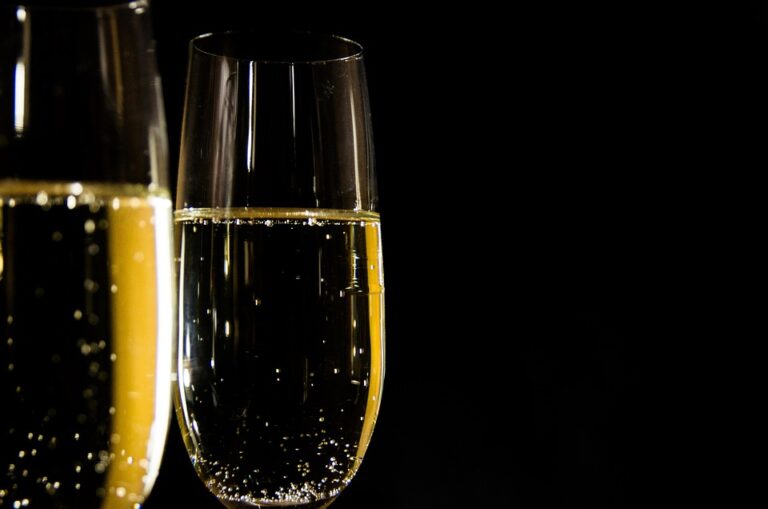Uncorking Elegance: The Art and History of Champagne
Champagne, the sparkling wine synonymous with celebration, elegance, and luxury, has a storied history as rich as its flavors. Understanding this exquisite drink involves diving into its artistry, the meticulous production process, and the traditions that elevate it to its esteemed status.
H2: The Origins of Champagne
Champagne comes from the Champagne region of northeastern France, which has been producing wine for over two thousand years. According to recent statistics, the Champagne industry contributes approximately €5.5 billion to the French economy each year, highlighting its importance not just as a luxury beverage but as a vital economic driver.
H3: A Historical Perspective
The origins of Champagne date back to the Romans, who cultivated vineyards in the region. However, the sparkling wine we know today began to take shape in the 17th century. It was Dom Pérignon, a Benedictine monk, who famously contributed to the development of the méthode champenoise, or traditional method, which involves a secondary fermentation in the bottle. This method was pivotal in creating the bubbles that define Champagne.
H2: The Production Process
Creating Champagne is an intricate art that requires patience and precision. The process generally follows these steps:
- Harvesting: Grapes are handpicked, primarily three varieties – Chardonnay, Pinot Noir, and Pinot Meunier.
- Pressing and Fermentation: The grapes are gently pressed to extract fresh juice, which is then fermented.
- Blending: Different wines from various years and grape varieties are blended to achieve a consistent house style.
- Secondary Fermentation: Sugar and yeast are added to the blend before bottling, leading to a second fermentation that creates bubbles.
- Riddling and Disgorgement: Bottles are gradually rotated to collect sediment, which is removed in a process called disgorgement.
- Dosage: A mixture of wine and sugar, called dosage, is added to finalize the flavor profile.
- Corking: Finally, the bottle is sealed and labeled.
H3: Aging to Perfection
Most Champagne is aged for a minimum of 15 months, though premium cuvées can age for years, developing complex flavors and aromas. This aging process results in the nuanced profiles that Champagne lovers cherish.
H2: The Role of Terroir
Wine enthusiasts often refer to the concept of ‘terroir,’ a French term that encompasses the geographical and environmental factors influencing the wine’s characteristics. In the case of Champagne, the chalky soil, climate, and cultivation techniques are integral to the profile of the final product. This unique terroir contributes to the crispness and minerality that are hallmarks of quality Champagne.
H3: The Significance of Styles
Champagne comes in various styles, including non-vintage, vintage, rosé, and blanc de blancs. Non-vintage, which accounts for about 90% of production, offers a consistent flavor year after year. Vintage Champagne, produced only in exceptional years, showcases the unique characteristics of that particular year.
H2: Champagne Around the World
While most Champagne must come from the Champagne region, sparkling wine producers worldwide have adopted similar methods, producing high-quality alternatives like Prosecco in Italy, Cava in Spain, and sparkling wines from regions such as California and Australia. Many of these sparkling wines have carved a niche in the global market, with a recent report indicating that global consumption of sparkling wine grew by 6% in 2023, emphasizing the rising trend and diverse preferences among consumers.
H2: The Symbolism of Champagne
Champagne is more than just a drink; it embodies celebration and elegance. From weddings to New Year’s, the act of uncorking a bottle of Champagne signifies joy and festivity.
H3: The Experience of Drinking Champagne
Drinking Champagne is an experience in itself. The effervescence tingles on the palate, making each sip an adventure. Unlike many other wines, Champagne is often enjoyed chilled, enhancing its refreshing qualities.
H2: Conclusion: Uncorking the Future
As the appreciation for Champagne continues to grow, so do innovations in its production and presentation. The industry is adapting to sustainability practices and exploring new marketing strategies to capture the attention of younger consumers.
For those interested in the elegance and artistry of Champagne, it is more than just a drink; it is a reflection of a culture rooted in tradition and indulgence. Whether savoring a glass of vintage Champagne or exploring new sparkling wines, the journey into this world promises sophistication at every turn.
Multimedia Suggestions:
- Image 1: A vineyard in the Champagne region. Alt text: Vineyard in Champagne producing quality Champagne.
- Image 2: A sparkling glass of Champagne in celebration. Alt text: Glass of Champagne symbolizing elegance and celebration.
For more wine-related content on buzzo.live, check out our articles on The Rise of Natural Wines and Exploring the World of Craft Beers. To learn more about the Champagne industry, visit the official website of the Champagne Bureau, which offers valuable insights and statistics.
Disclaimer: The content in this article is for informational purposes only. Buzzo.live does not claim to provide professional advice or consultancy, and cannot be held liable for any actions taken based on this information.


